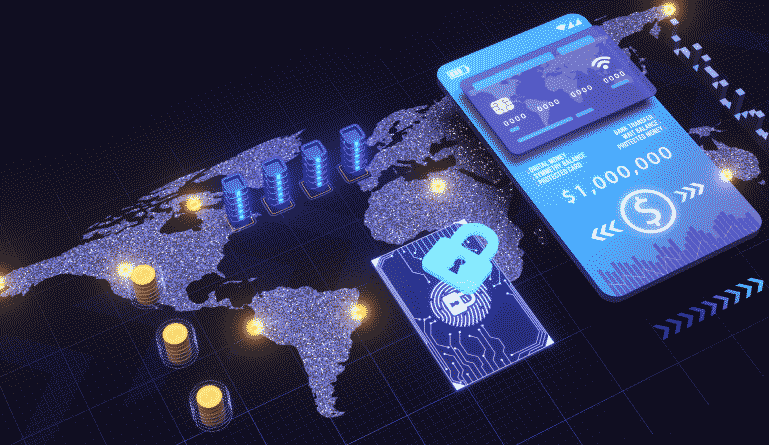Security of fintech payment platforms just isn’t a buzzword—it’s your peace of mind every time you tap your phone to pay for your morning coffee. You trust these systems with your hard-earned cash, but ever wonder how they keep your digital dollars safe from the bad guys? Stick around, as I’m diving deep into the virtual vaults to show you the powerful shields and smart strategies that secure your transactions day in and day out. We’re talking encryption, hardcore authentication, and high-tech fraud fighting tactics. So, pull up a chair and let’s unravel the digital safeguards that fintech has to offer. This isn’t just any tech talk; it’s the key to locking down your financial well-being in the wild web world.
Understanding Fintech Payment Security Measures
The Role of Encryption in Protecting Digital Payments
Ever wonder how online payments stay safe? It’s all about security measures. We keep your digital dollars secure using something called encryption. This means taking data and mixing it up. So, it’s like a secret code. Only the right person with the right key can read it. For your online shopping and banking, this is crucial. If someone tries to peek, all they see is gibberish.
Encryption for digital payments is serious work. We use complex methods that are tough to crack. This makes sure your money moves safely from place to place. Banks, apps, and online stores all use this tool. It helps them make sure no one can take or change your payment info. Think of it as a super-strong lock on your financial data.
Authentication Protocols: The First Line of Defense
Now, let’s talk about stopping bad guys from the start. How do we do that? With authentication protocols, that’s how. This is a fancy way of saying proving who you are. When you log in somewhere, they want to know it’s really you. So, they might ask for a password or send a code to your phone. This is part of what we call ‘two-factor authentication.’
Mobile payment secure practices also need this step. Before you can pay with your phone, you must prove you’re the owner. You might use a fingerprint, a face scan, or a special code. It’s all about checking it’s you, not a stranger, trying to use your cash. This is your first shield against thieves on the internet.
Keeping your financial tech safe is a big job. We always stay alert for any new risks. We keep making our walls higher and our locks stronger. So, when you tap, click, or swipe to pay, rest easy. The experts are always working to keep your digital dollar safe.
Combatting Fraud with Advanced Fintech Solutions
Implementing Anti-Fraud Systems for Enhanced E-Payment Security
Keeping your money safe when you pay online can feel like a tough job. But good news! Fintech companies work hard to fight the bad guys. They use smart tools to spot and stop fraud before it hits. One key way they do this is by checking how you normally use your account. If they see something weird, like a big buy in a far-away place, they can act fast to protect you. This quick check is like having a guard who never sleeps. They’re always looking out for you.
More than just watching, these services learn over time. They get better at finding out what’s normal for you and what’s not. Encryption keeps the details of your digital payments a secret by mixing them up. This way, only you and the company you’re paying can understand them. See it like writing a secret note that only your best friend knows how to read.
Fintechs also use special codes called tokens during your transaction. These tokens stand in for your card number, so the real one is never out there for thieves to grab. This means even if someone sneaky gets their hands on the token, they can’t use it to buy stuff, because it’s a onetime thing.
All these tech tricks are important. They make sure when you tap ‘buy,’ your money goes to the right place, not into a fraudster’s pocket.
The Importance of Transaction Monitoring and Risk Management
Now, let’s talk about watching over every deal you make. It’s called transaction monitoring. This careful watching helps fintechs catch bad stuff early. Think of it as having a super-smart friend check over your homework for mistakes. They spot the slip-ups before you turn it in. Like if you buy shoes every month, and then a charge for ten pairs shows up one day, someone’s going to check if it’s really you. This also helps keep the whole online shopping world safe for everyone.
Risk management is another big deal. It’s about knowing what could go wrong and having a plan for it. Like if you save money for a rainy day, that’s managing your risk. Fintechs do this by setting rules about how much money you can send without extra checks or what to do if something looks fishy. This way, they’re ready for storms that might come.
By taking these steps, dealing with your dough online becomes safer each day. Fintech companies are like smart banks in your phone or computer. They make sure your cash is safe while you’re buying or moving it around in the digital world. And as we get smarter about fighting fraud, those bad guys have a tougher time getting their hands on your hard-earned cash. That’s peace of mind for you and a big win for all of us who like shopping from our couch.
Compliance and Innovations in Payment Platform Security
Staying Ahead of Cybersecurity Threats with PCI DSS and Fintech Certifications
We live in a world where cyber thieves are smart. If we snooze, we lose. This is where PCI DSS and fintech security certifications come in. These are rules and seals of approval that keep our digital cash safe. Think of PCI DSS as a strong fence around our money. To keep this fence tough, payment platforms must pass hard tests. These tests check if the plateform is using tricks like encryption to lock up our data tight.
Encryption for digital payments turns our sensitive info into secret codes. Bad guys can’t understand these codes. It’s like we speak in a language only we know. This keeps our online purchases safe. Fintech companies must follow fintech regulatory requirements. These are like rules of the game in money safety. They must always stay sharp to protect us from new sneaky tricks from hackers.
Fintech firms get a gold star, like a badge, when they meet top-notch safety standards. This gold star is what we call a fintech security certification. When we see this badge, we can feel at ease that smart people have checked everything for sneaky holes where thieves could sneak in.
Biometric and Two-Factor Authentication Techniques in Payment Apps
We step up our game with biometric security in fintech and two-factor authentication for transactions. They are like having a super secret handshake and a guard who knows your face. Biometric security uses things like fingerprints or face scans. It’s pretty cool because nobody else has a face or thumbprint like yours.
Then comes two-factor authentication. You know it as the extra code you get in a message when you log in. Imagine a door that asks for a key and then a password. It is just like that. This double-check makes sure it’s really you. With these two, even if someone guesses your password, they can’t get into your account.
Using these tools is key for mobile payment secure practices. We carry our phones everywhere. So, we need to keep them extra safe. These methods make our phones like a safe nobody can easily crack. Payment app security features often use these high-tech tools to keep our money from falling into the wrong hands.
As we use our phones to tap and pay or send cash with a click, knowing about these security features helps us trust the magic happening inside our apps. This trust lets us focus on the fun part—shopping or sending money to friends—without sweating about the bad stuff.
Remember, in the online world of finance, it’s not just about being fast. We’ve also got to be safe. That’s what these rules, tests, tricks, and tools are all about. They close the doors on the bad guys, so we can keep our digital dollars snug as a bug.
Safeguarding Mobile Payment Services
Data Protection Strategies and Compliance in Financial Apps
Our phones hold our lives, including our money. We need to keep them safe. So, how do financial apps protect your money and info? They use tough security measures. They follow rules, too. All to stop the bad guys and keep your money safe.
Rules, you ask? Yes. Apps must meet fintech regulatory requirements. One key rule is PCI DSS fintech compliance. It’s like a set of best practices for payment security. You might not see it, but it works in the background. It makes sure your payment data stays out of the wrong hands.
Let’s talk about keeping payment details safe. One top tool is encryption for digital payments. This scrambles your data. So, if someone snatches it, they can’t understand it. Think of secret codes in spy movies. That’s encryption.
You know when you log in and it asks for a code from your phone? That’s two-factor authentication for transactions. It protects you by checking if it’s really you. It’s like asking for a secret handshake before letting you in.
You’ll also find payment app security features. These include alerts. So, if there’s odd activity on your account, you know. Quick! And you can fix it fast.
The Evolution of Secure Payment Gateway Technology and Mobile Payment Practices
Payment technology is cool and smart. It changes to help you. To stop fraud, apps use what we call secure payment gateway technology. It’s like a tough guard that only lets in the people with a VIP pass. It checks each payment carefully. No ticket, no entry.
We’ve come a long way with mobile payment secure practices. In shops, we tap our phones to pay. It’s neat, but we need to keep it safe too. There are ways to block cyber crooks. Like tokenization in payment security. It turns your card number into random numbers for each payment. It means your real card number is never out in the wild.
Cybersecurity in fintech solutions is no joke. Imagine AI in fintech security measures. It’s like having a super-smart friend watching out for scams all the time. Or think of machine learning fraud detection. It learns what’s normal. When something’s off, it raises a flag.
For the tech-savvy, we see secure fintech software development. This is serious computer stuff. It builds payment apps to be like safes. Hard to crack.
And there’s more. Mobile payment apps use biometric security in fintech. It verifies with your fingerprint or face. It’s like your personal lock that only you have the key for.
We never rest when it comes to online transaction protection. We get better every day. The big aim is to keep everything secure and you at ease. So tap, send, and pay away with trust in your digital dollar’s safety.
In this post, we’ve explored how fintech boosts payment security. We started with encryption, showing how it guards digital payments. Next, we reviewed authentication protocols as key to secure access. Then, we tackled measures for fighting fraud like anti-fraud systems and closely watching transactions for risk management. We also covered compliance rules and new tech in payment security. This included PCI DSS and cutting-edge biometric and two-factor methods. Finally, we looked at how financial apps protect data and the growth of safe payment gateways for mobile users.
To sum it up, fintech is making payments safer than ever. As you use your apps and online platforms, remember that these tools are working to keep your money safe. Still, stay alert and follow the best practices for security. It’s our combined efforts that create a wall against threats. Keep these points in mind and you’ll help build a stronger, more secure digital world. Let’s keep pushing for even smarter and safer transactions!
Q&A :
How secure are fintech payment platforms?
Fintech payment platforms employ advanced security measures such as end-to-end encryption, two-factor authentication, and real-time fraud detection algorithms to ensure transactions are safe. Many use PCI DSS compliance standards as a baseline and enhance security with additional protocols tailored to their specific service offerings.
What makes fintech payment platforms safe for online transactions?
The safety of online transactions on fintech payment platforms is upheld through multiple layers of security. These layers include secure sockets layer (SSL) encryption, biometric authentication, tokenization of sensitive data, and regular security audits. Compliance with international security standards also plays a critical role in maintaining a secure transaction environment.
Can fintech payment apps protect against unauthorized access?
Most fintech payment apps have robust security features to protect against unauthorized access. These features often include strong password requirements, biometrics, automatic logouts after periods of inactivity, and real-time notifications of account activity. Regular software updates and patches further reinforce these protections.
What are the common risks associated with fintech payment platforms?
Common risks associated with fintech payment platforms include data breaches, identity theft, phishing attacks, and fraudulent transactions. Despite advanced security measures, users must remain vigilant and follow best practices for password management, device security, and recognizing phishing attempts to minimize these risks.
How do fintech platforms ensure compliance with financial regulations?
Fintech platforms ensure compliance with financial regulations by adhering to applicable laws, such as the Bank Secrecy Act (BSA), Anti-Money Laundering (AML) regulations, Know Your Customer (KYC) requirements, and the General Data Protection Regulation (GDPR). Many also work with regulatory bodies and collaborate with legal experts to stay up-to-date with changes in financial legislation and ensure ongoing compliance.





